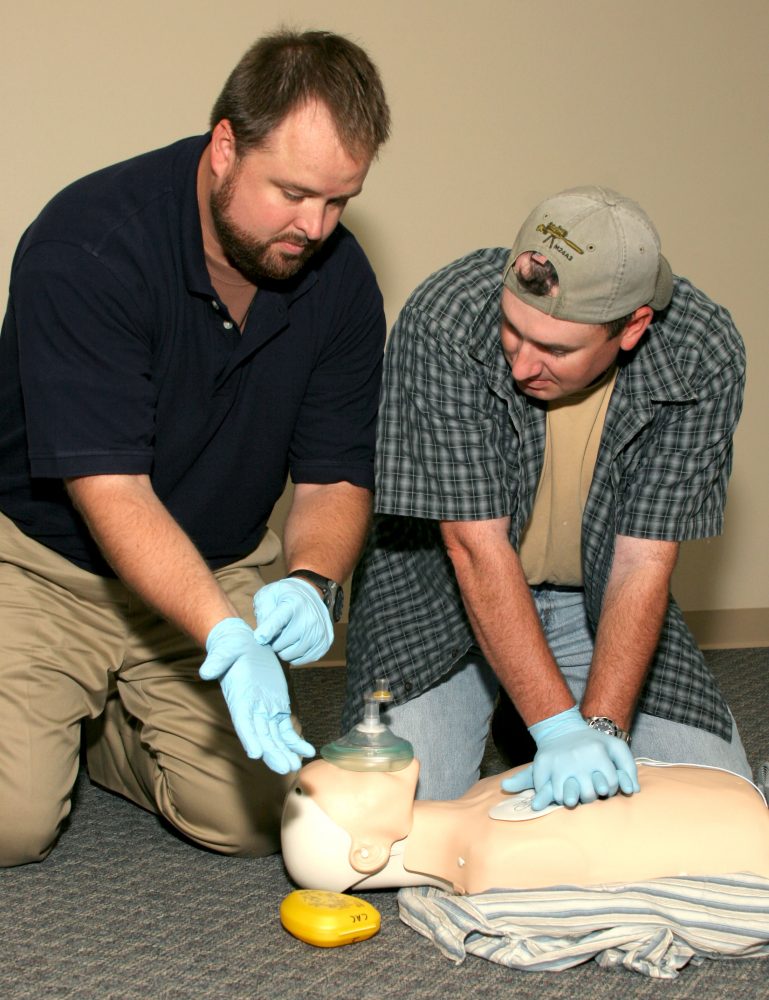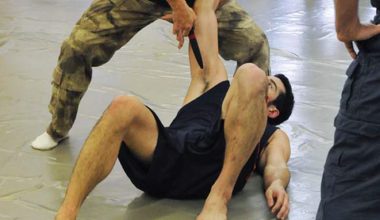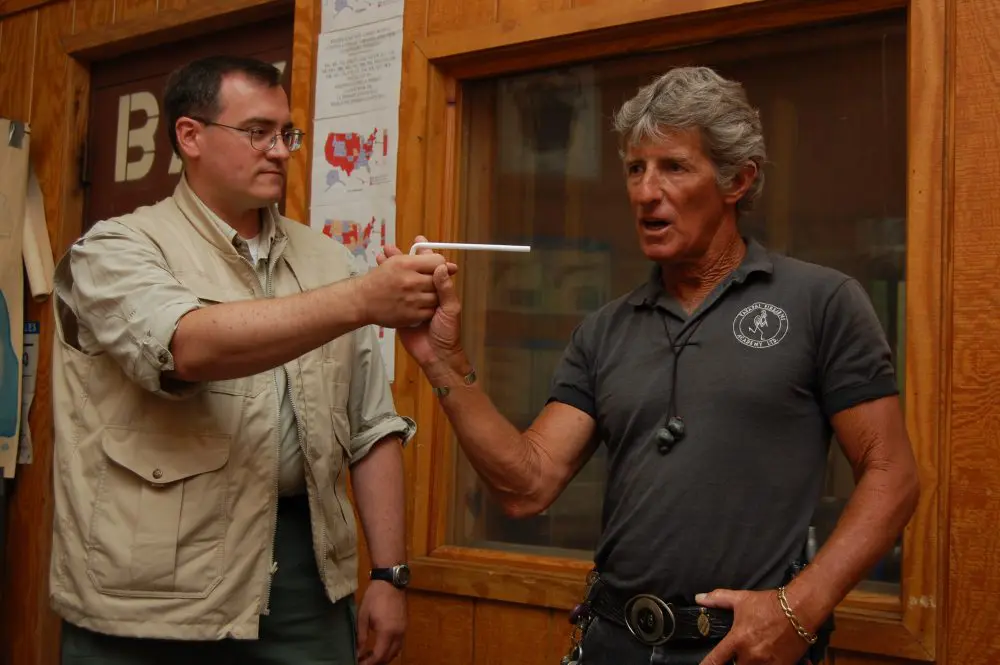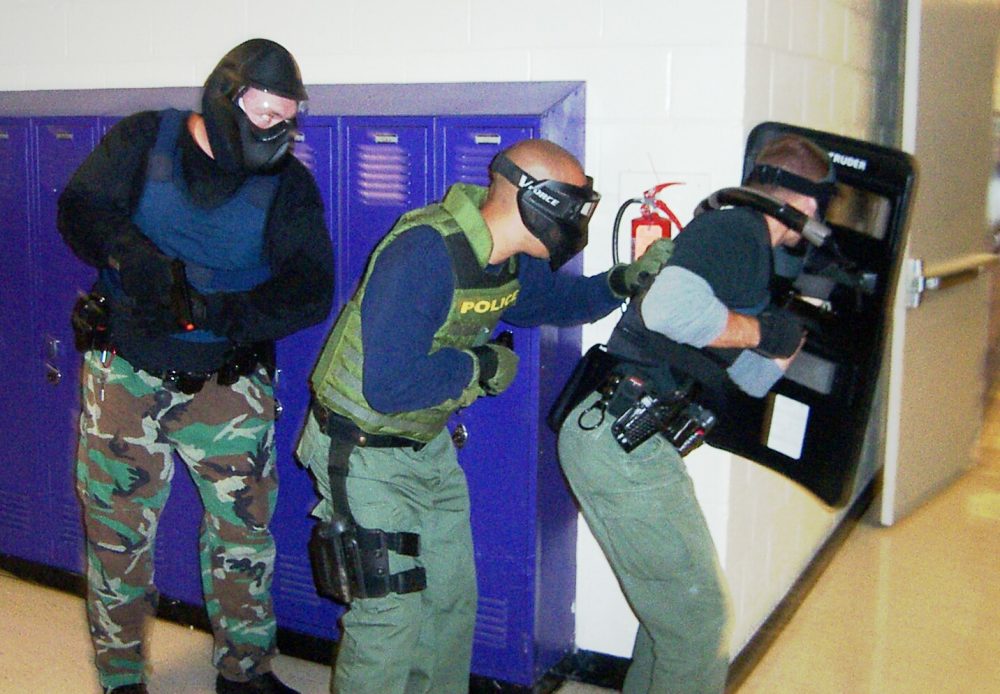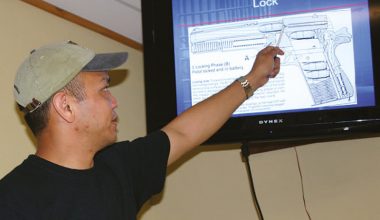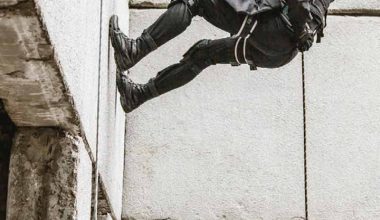If a solution has worked well in the past, new ones will not likely be attempted. Where is this going, you ask? Lights, brother.
Pistol-mounted flashlights have been around for a long time. However, they have always been considered a specialty item due to their size and weight, battery/ bulb life and cost. It was not practical to expect that rank-and-file weapons toters “needed” the capability enough to justify the associated drawbacks.
Over time, size and cost reduction in weaponlights led a slow migration from SWAT teams’ drop holsters to serious shooters’ nightstands for home defense. However, there was still no general expectation in the shooting community that every soldier, lawman, and CCW guy ought to have a light attached to his blaster. Those lights were for special units and Tackleberry types with deep pockets, and the trusty SureFire six-volt handheld that every switched-on user had on his belt was nearly as good. Right?
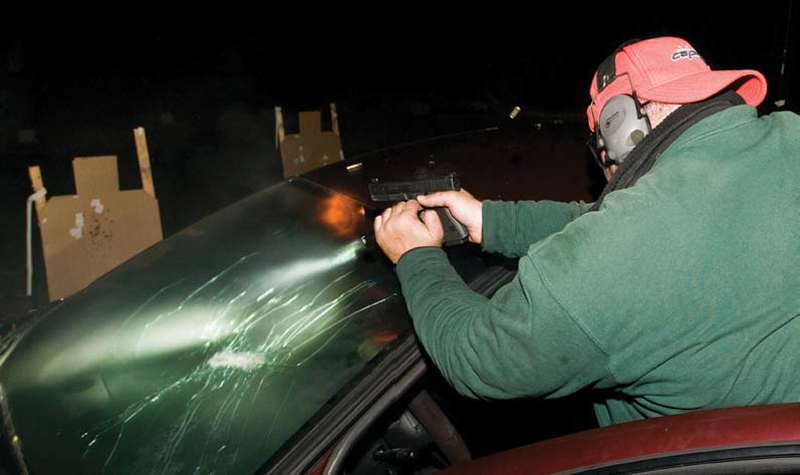
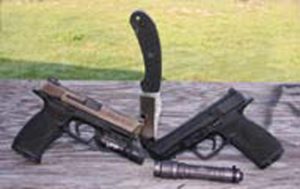
Table of Contents
A BETTER WAY?
I recently looked up and realized that maybe there is a better way. At a Viking Tactics Night Fighter class (BRINGING A GUN TO A NIGHT FIGHT, August 2010 S.W.A.T), roughly half of the class had pistol-mounted lights of one sort or another, and the other half had handhelds. Only in the simplest drills was the handheld crew able to keep up. The pistolmounted half ran farther and farther away in speed, certainty and overall performance as the scenarios became more and more intense and involved more dynamic movement and realistic cover.
As a general observation, I noted that the mounted shooters were often accomplishing with ease what I was working hard for, plus they were doing it in half the time. Their holstered nightfighting pistols didn’t seem to be any drag on things the way the old mongo ones were, either. Maybe the maze layout had changed and there was a shorter route to the cheese that many of us had been ignoring….
To shake out the concept, I acquired two of SureFire’s newer offerings, the X300 weaponlight and the LX2 handheld. A light-ready holster is available as a standard item from Blade-Tech, and the StingRay loop belt model is very similar in profile and presentation to my customary belt holster for the Smith & Wesson M&P 9 used in the shooting.
The X300 is available with multiple back plates to suit the application, and over the course of testing I switched between the rocker switch and the DG tapeswitch to get a good sense of each. The third option is a pressure pad to adapt the X300 to a carbine. The LX2 is very similar in profile to the SureFire Executive Outdoorsman that I’ve carried for years, so shooting with it was familiar from the start.
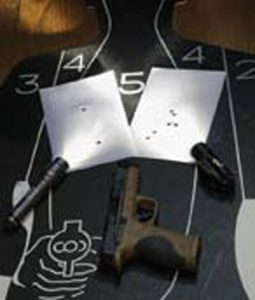
IN SEARCH OF EMPIRICAL DATA
I wanted to shoot for record against a few standard scenarios that would provide readers a sense of the performance difference between mounted and handheld lights. Effectiveness from the draw jumped out as key information, as did multiple hits in a fixed “fight like” time, long-range hit potential, and scenarios from awkward positions inside of and shooting under vehicles. The shooting was done in multiple training sessions and one pistol class over nine months, to ensure that results didn’t reflect a oneday snapshot but rather had some staying power.
Before running the from-the-holster segment, two seconds was chosen to represent the outer envelope of being able to get the pistol out and “participate” in a reactionary fight. Target used was an EAG silhouette, with only hits within the eight-inch vital zone being recorded. Shooting was done inside a darkened indoor range with the target frame barely discernible seven yards away. Across many attempts, it was difficult to make the two-second limit while simultaneously drawing the M&P with one hand and the LX2 with the other. A little over half of the attempts came in under two seconds by a few hundredths for a single well-placed hit.
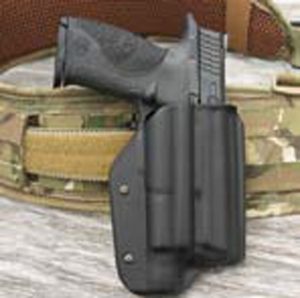
There were the typical issues of aligning the light beam with the target while trying to get enough sight picture to make the hit, but I did not waste time trying to make the beam completely coaxial, and in most cases shot “through” any misalignment, since the LX2 cast plenty of light to ID the target and backlight my sights.
Switching to the Blade-Tech rig and mounting the X300, I repeated the drill. With the light mounted, I was able to consistently put two rounds on target within the par, with a third just barely squeaking over the time limit. For some perspective, the average to two hits was 1.85 seconds—quicker than any single first-round impact with the handheld.
The next scenario was based upon a simple scenario: holding on a threat, danger area, etc., with the light out and activated and pistol at the ready. Upon cue, the target—this time a 5”x8” index card—was engaged with a non-standard response in the same two-second time limit as the previous test.
We now know that two rounds have no magical ability to stop a fight, and even with proper placement there may be a need to stay on the trigger until the job is done. With the X300 in place, there was no problem saturating the card; in fact the unit had a recoil dampening effect that reduced muzzle rise and enabled six or more well-centered hits each time.
With the handheld light, I was able to produce two hits on demand using my favored flashlight shooting technique. On several attempts, I was able to break three shots, with only two having effect on the 5×8 card. To make sure I wasn’t skewing things by using a fairly uncommon technique, I made attempts employing the Harries and FBI styles of lightfighting and never got more than one hit on the card in the two-second limit.
Moving out to 25 yards, the lights were shot for accuracy potential against a standard bulls-eye on a fully darkened range. This proved to be a wash, as both lights enabled me to consistently put three of five Black Hills projectiles inside a 25-yard bull, with four out of five each inside an eight-inch circle. Time was not recorded and was not an issue with either type of light, but mental effort was a little greater to get the hits with the handheld. It is not uncommon for shooters to perform better in accuracy when shooting with lights, as the backlighting helps them isolate and focus on the front sight. This is, of course, with little stress and no time limit.
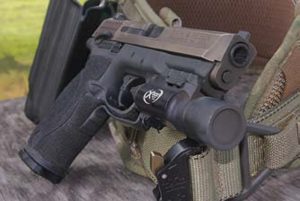
Removing the carbon can be difficult. The best field expedient is to scrape it off with a knife blade tip. Preventing the buildup is better and should be incorporated into SOP/systems checks. Viking Tactics recommends that users apply a light film of lip balm to the lens so that the soot adheres to it rather than the lens itself, simplifying clean up.
ADD STRESS
The next phase was to induce stress and get scenario-based awkwardness and unfamiliarity to challenge both systems.
The first scenario was shot under ambient light conditions while in the driver’s seat of a vehicle. A Law Enforcement Targets photo target representing an ambush was placed at seven yards at the shooter’s ten o’clock. Upon cue, the time was recorded to draw and get a single decisive hit. Working around the cramped seated position to get both pistol and light out of the window to locate the threat and ID the vitals on the partially covered photo target added layers of realism to the earlier stand-and-draw scenario.
Using the standard pistol and LX2, I had to lean significantly forward to be able to draw each from the seated position, so much so that I temporarily lost the threat, obscured by the frame of the vehicle. Average time to get the hit was a glacial 4.31 seconds. Hits were solid, but the hard target angle, unfamiliar photo target and awkward position made it necessary to get the beam aligned rapidly.
If this were a truly reactionary fight, I suspect that many (most?) would instinctively get the pistol between themselves and the threat to sort out the problem via ambient light, muzzle flash, tritium, and hope/luck, going back to retrieve the light once the initial volleys had established a lull or produced insufficient results. It was that awkward.
With the X300 on board, it was still slow going due to the challenges, but once the weapon was in hand, hits were similarly good, at an average of 2.6 seconds. A key difference may have been that the support hand was able to help pull the shooter into a position to draw from while maintaining awareness of the threat. The difference between the two lights was 1.7 seconds—a meaningful time span given the scenario.
The final scenario was an under-vehicle shot to an ankle-sized vertical 3”x5” card seven yards distant. The start position was kneeling covered behind the tire and vehicle, holstered. At the signal, the shooter got the pistol and light into position to get a hit on the small target. The drill was run both with the right and left side nearest the vehicle (facing both toward the front and rear of the vehicle) to force different approaches.
The X300 allowed the support hand to be used to support the shooter and kneel down to punch out strong hand and service the target. Hits were 80% on the ankle/shin zone in an average of 3.6 seconds. The handheld results averaged 1.25 seconds slower at 4.85 seconds, with a 70% hit ratio.
In doing comparative testing like this, it’s useful to look at the first attempts, which are probably more illustrative of the average mission user than once the shooter becomes more and more familiar with the drill and an average time settles in. In this case, the delta between the lights was over four seconds for the initial run.
CLASS TESTING
A short time after I had completed the test shooting, I had a chance to attend a Viking Tactics Pistol class and used the M&P9, this time with the X300 locked in. The extra weight was not apparent on my belt nor in my hand during long strings. This is a welcome change from the not-so-distant past, when Marines would invariably visit the platoon armorer upon returning from CQB school and ask him to remove the brick-like lamp from underneath their secondary.
At some point during the class, I noticed I was sizzling through drills that required multiple follow-up shots and confirmed again that the slight weight out front was indeed helping my split times and recovery on single-hand drills. In addition to the underlug effect, part of this may be that the X300 provides a sort of ledge for the support-hand thumb to bear against for those who shoot with a thumbs-forward grip.
CONCLUSIONS REACHED
After experimenting back and forth over the better part of the last year, some general capabilities and limitations have emerged for each system. The basic pocket light is definitely more economical and allows a wider range of utilization. Even those who are issued a weaponlight will still require a handheld so as to not violate Rule 2 when doing administrative tasks or when the threat is uncertain.
This speaks directly to cost, which drives most decision making. For dedicated concealment, the gap is closing rapidly, but it is still largely a lightfree carry mode for many. There are several lights coming to market that may change that, and I plan on running them to see if they are reliable.
Weight is an easy excuse, but no longer a truly valid reason unless someone is carrying a Walker Colt. The vast majority of service pistols are polymer or alloy framed, and the additional 3.8 ounces of fighting light brings the weight to less than an all-steel service revolver of not so long ago.
Mounting rails are nearly universal on service pistols, and any organization that still has a rail-less legacy system is probably nearing service life and an opportunity to upgrade. Suitable duty holsters are readily available from Blade-Tech and Safariland.
In capabilities, the mounted light excels in numerous areas beyond performance. Institutional lowlight training is meager in most outfits, despite the ready statistics of when most engagements occur. Every practice session is a lowlight session when the light lives on the pistol, even more so when a tape switch is used.
Not long ago, there would have been concerns with battery life and particularly bulbs being able to stand a steady diet of recoil, but the new generation of LED bulbs allows full-time use.
When the situation demands a single hand or the shooter is injured in either arm, the mounted light continues to fight with no change or interruption. Also, no more hand jive or armpit juggling with the light when the pistol runs dry—the shooter simply reloads. The icing on the cake that the mounted light provides the shooter is the standoff effect, which enables the pistol to be rammed into contact meat in a rolling clinch, so that the pistol can be confidently fired and have a better chance of cycling than otherwise.
I suspect that many shooters who should be clamoring for their organization to issue a light on every handgun were just like me and complacent in the way things had been. But times have changed, and a new solution that demands serious consideration is here.
From either a liability perspective of personnel firing their pistols poorly or literally into the dark, or an officer safety perspective of denying personnel the most effective means to fight, it is a false economy to think that weaponlights and new holsters are too expensive.
